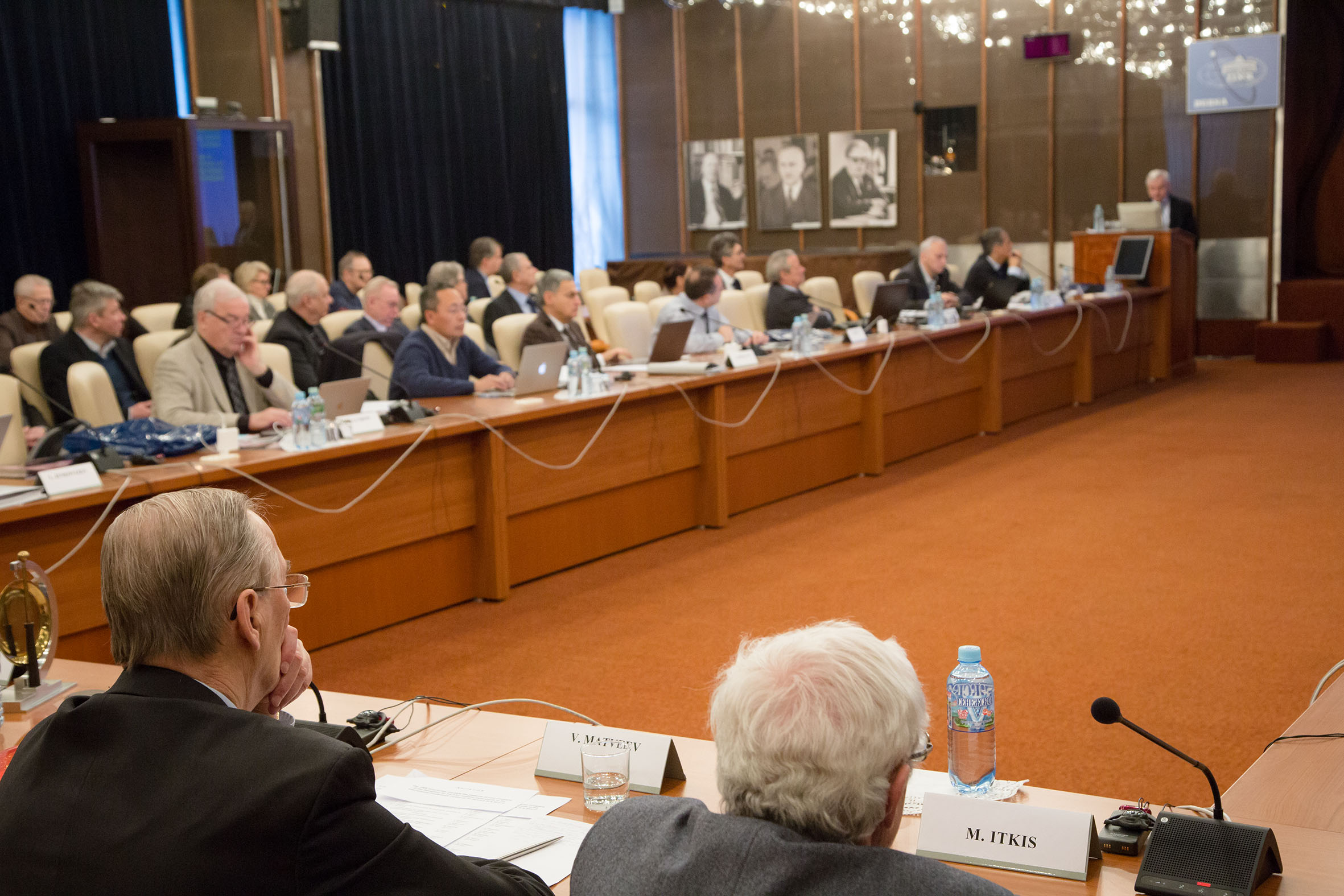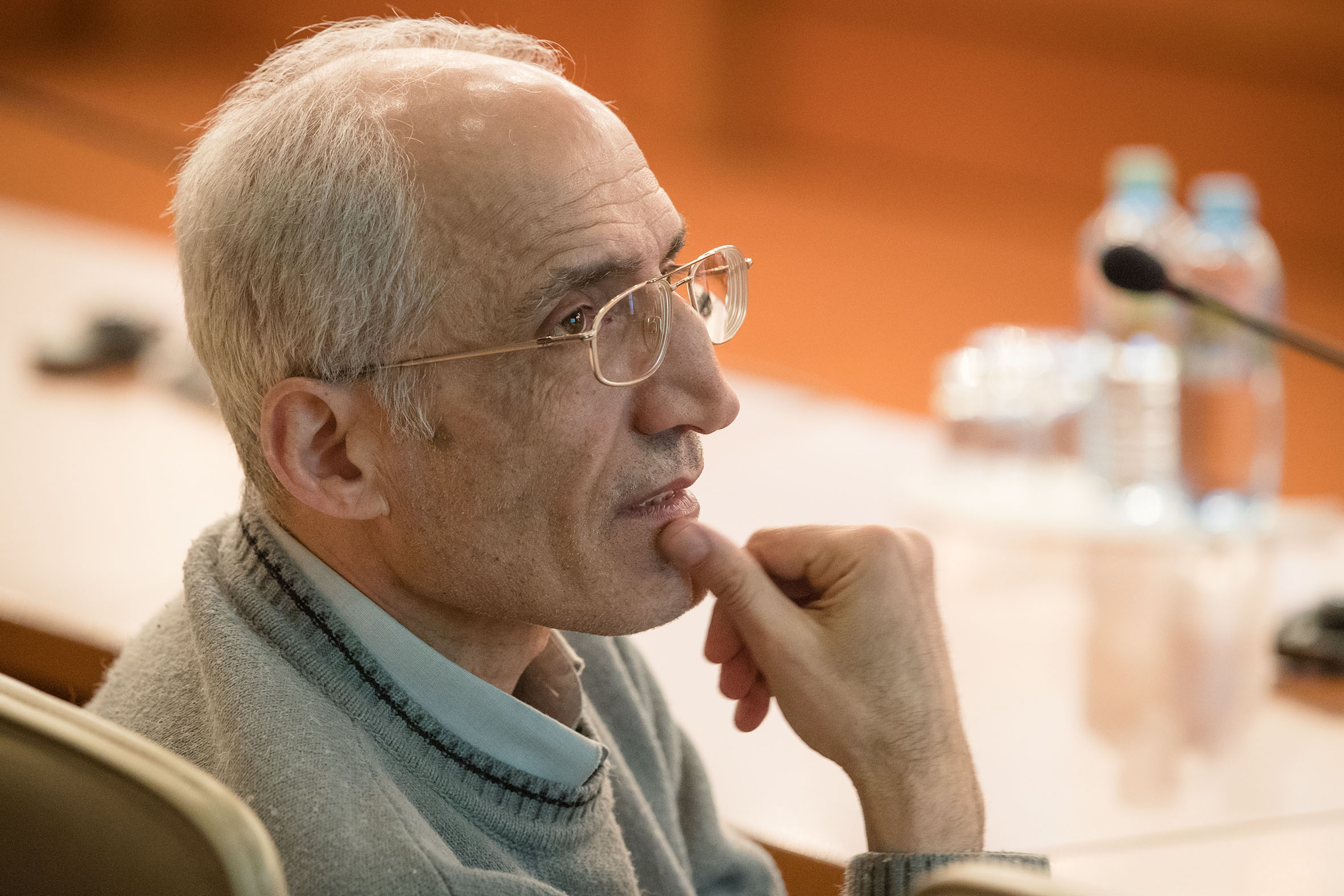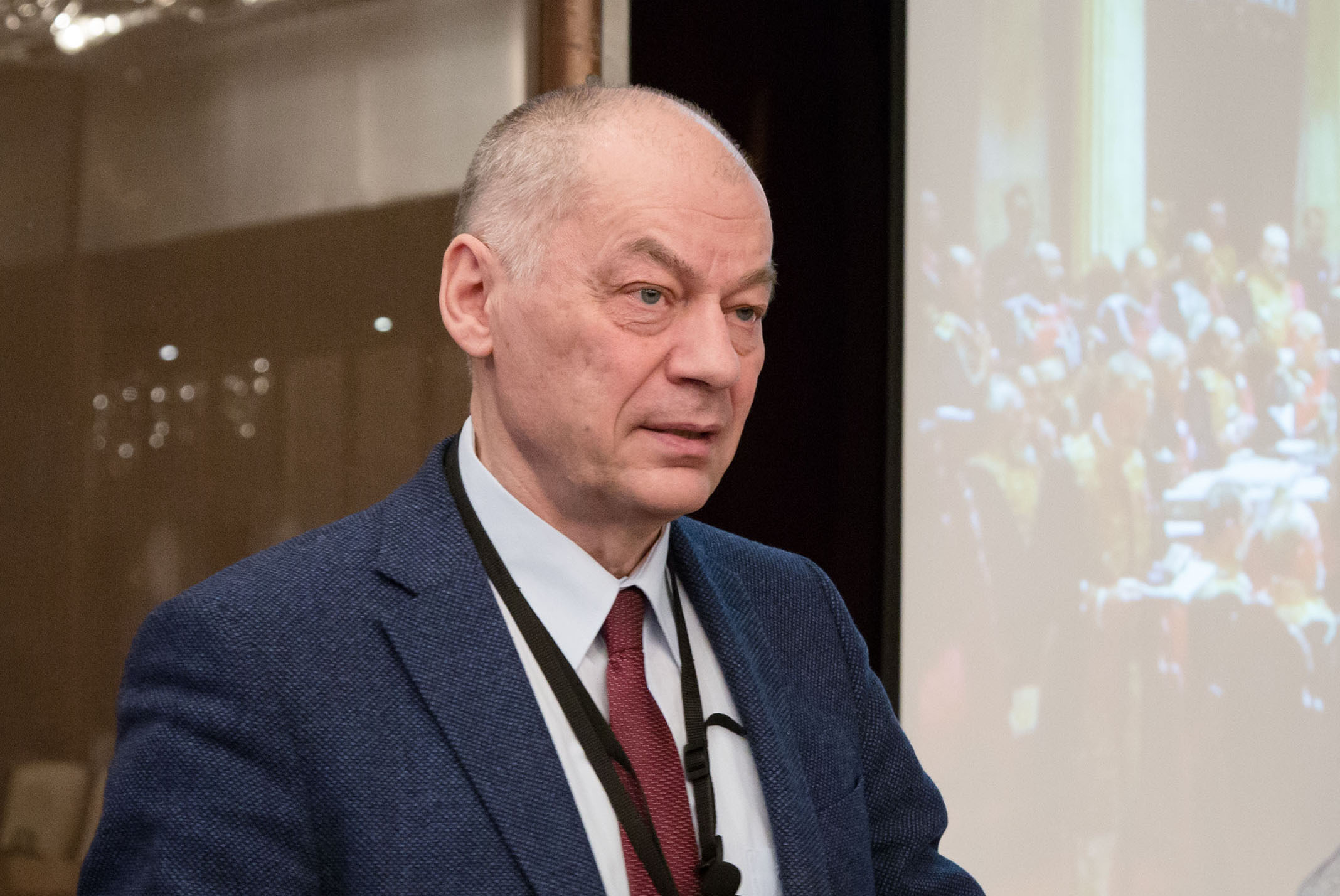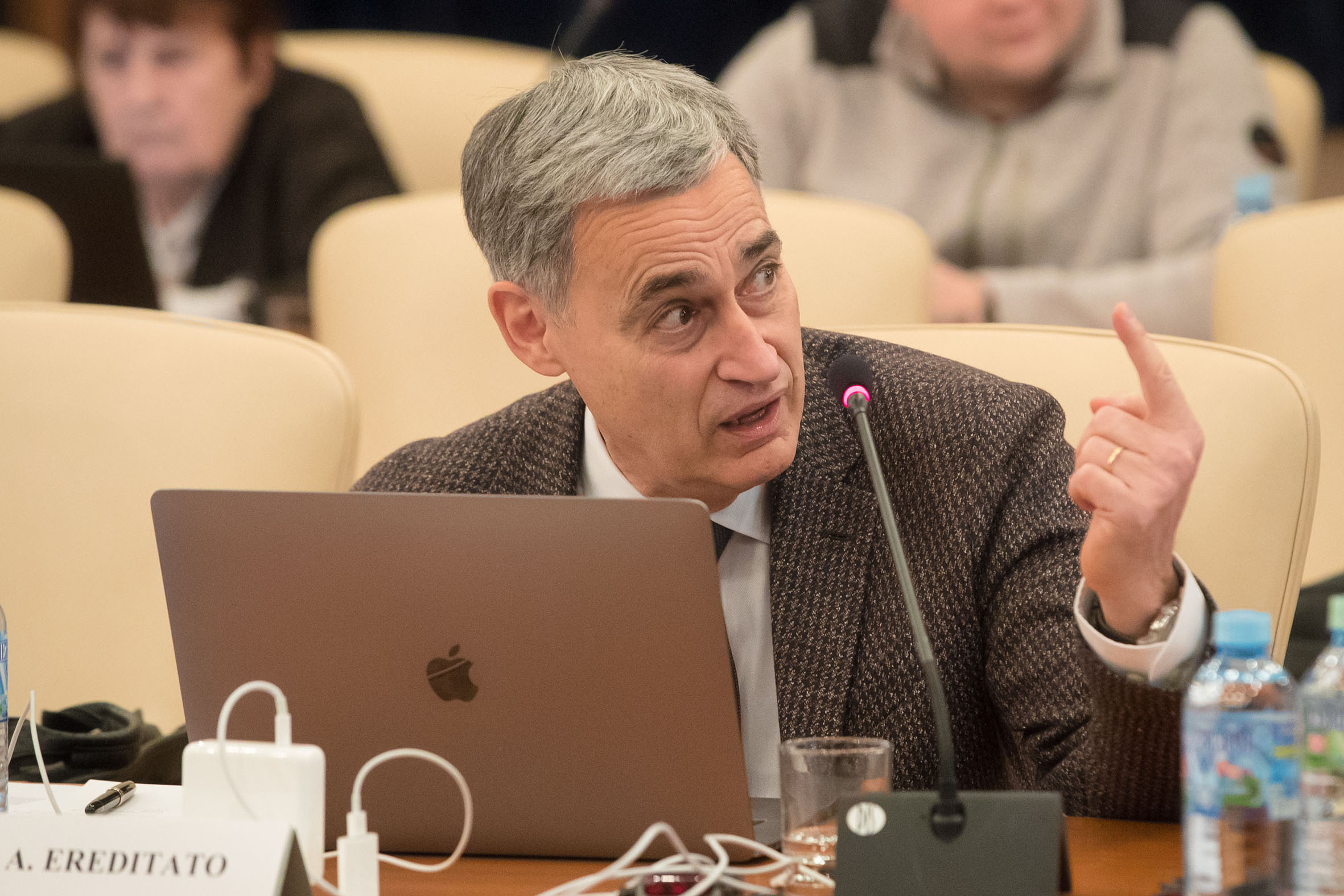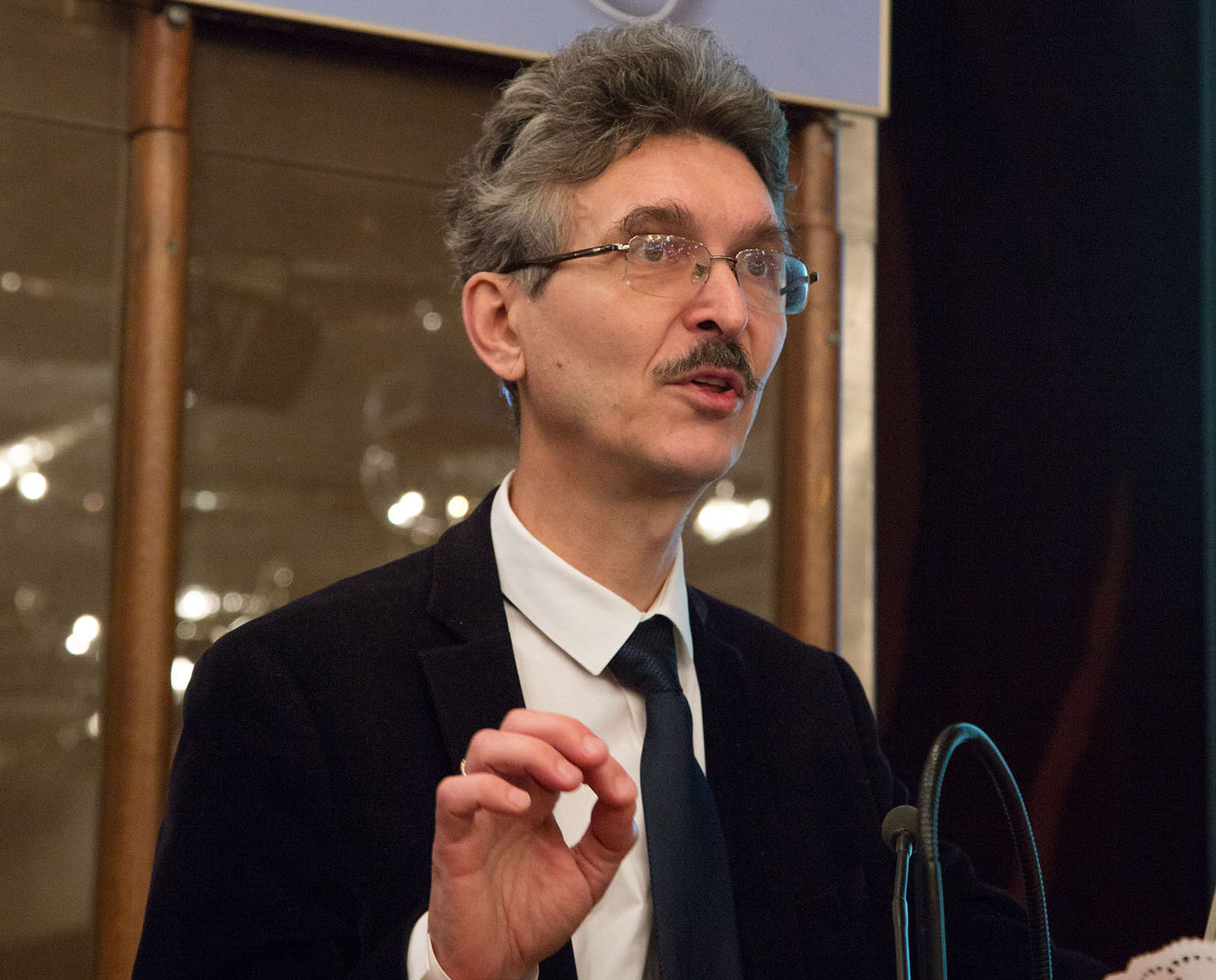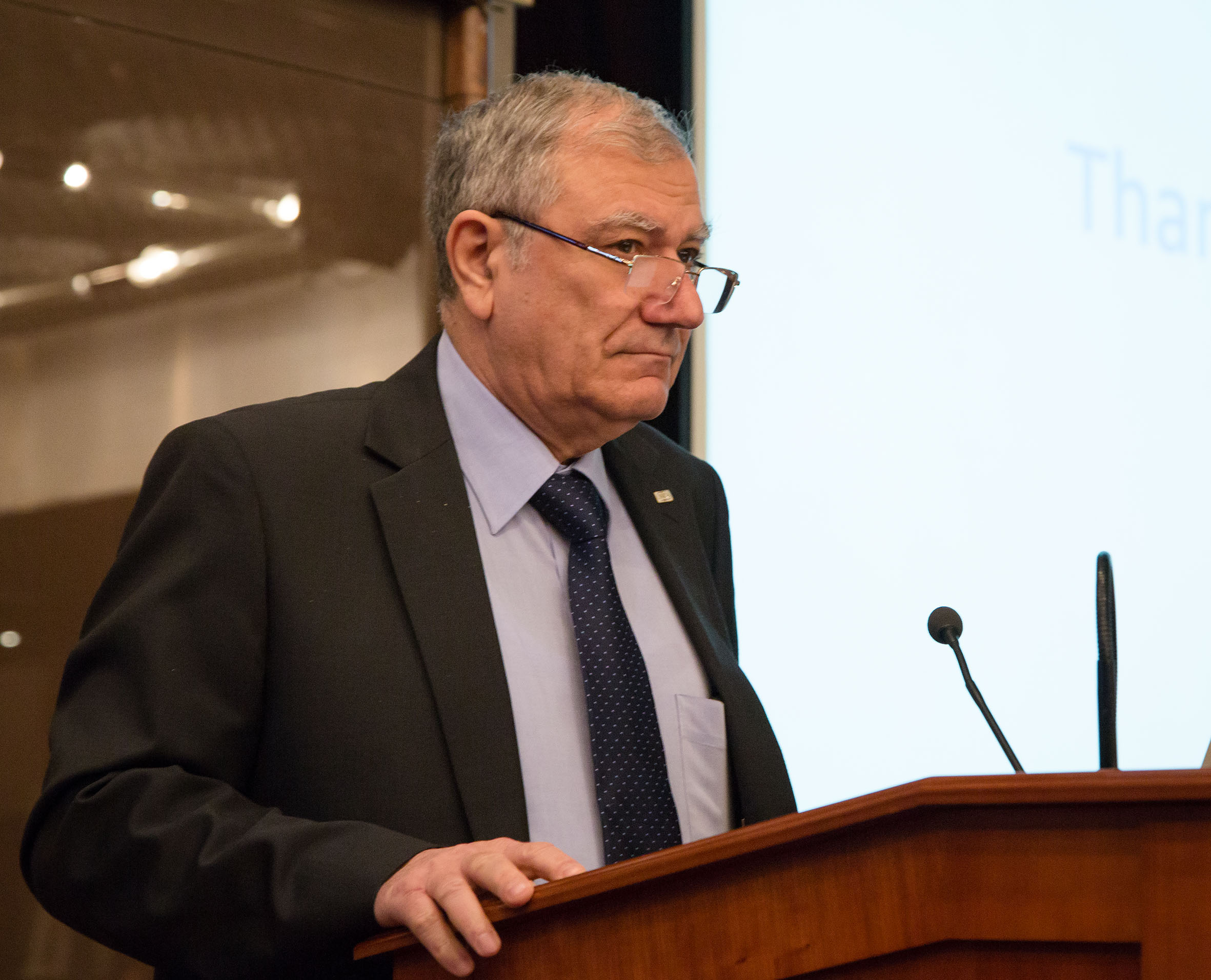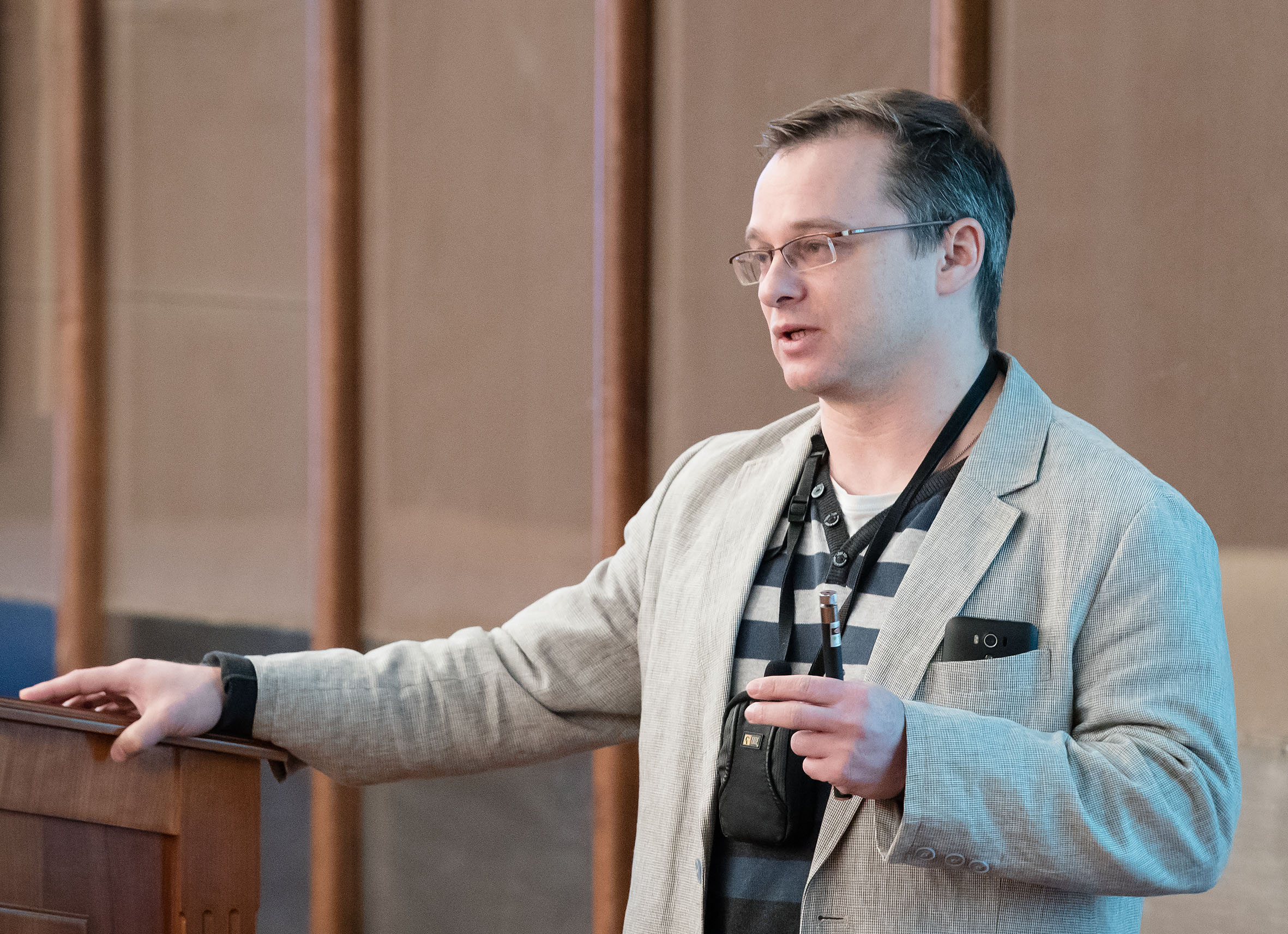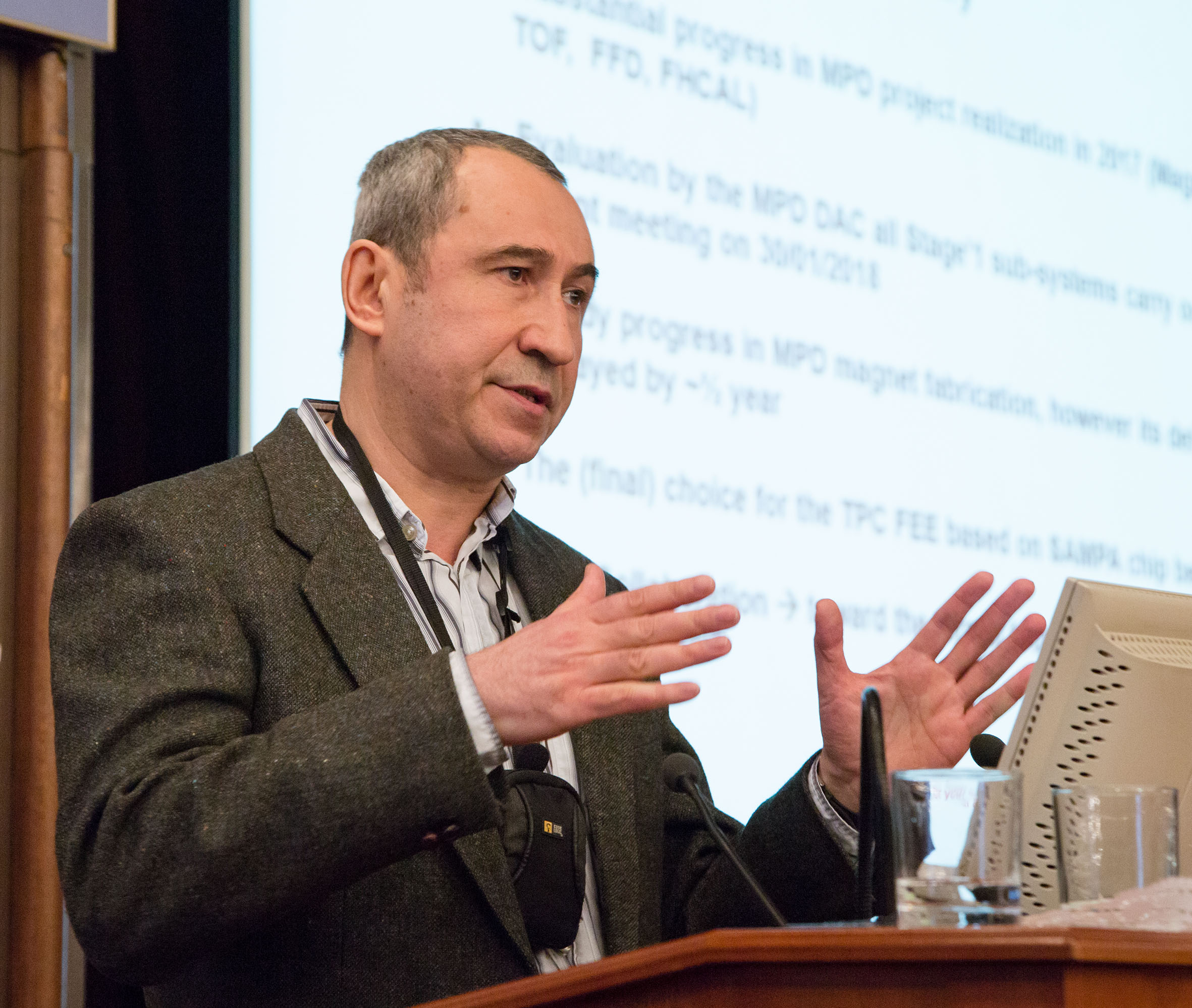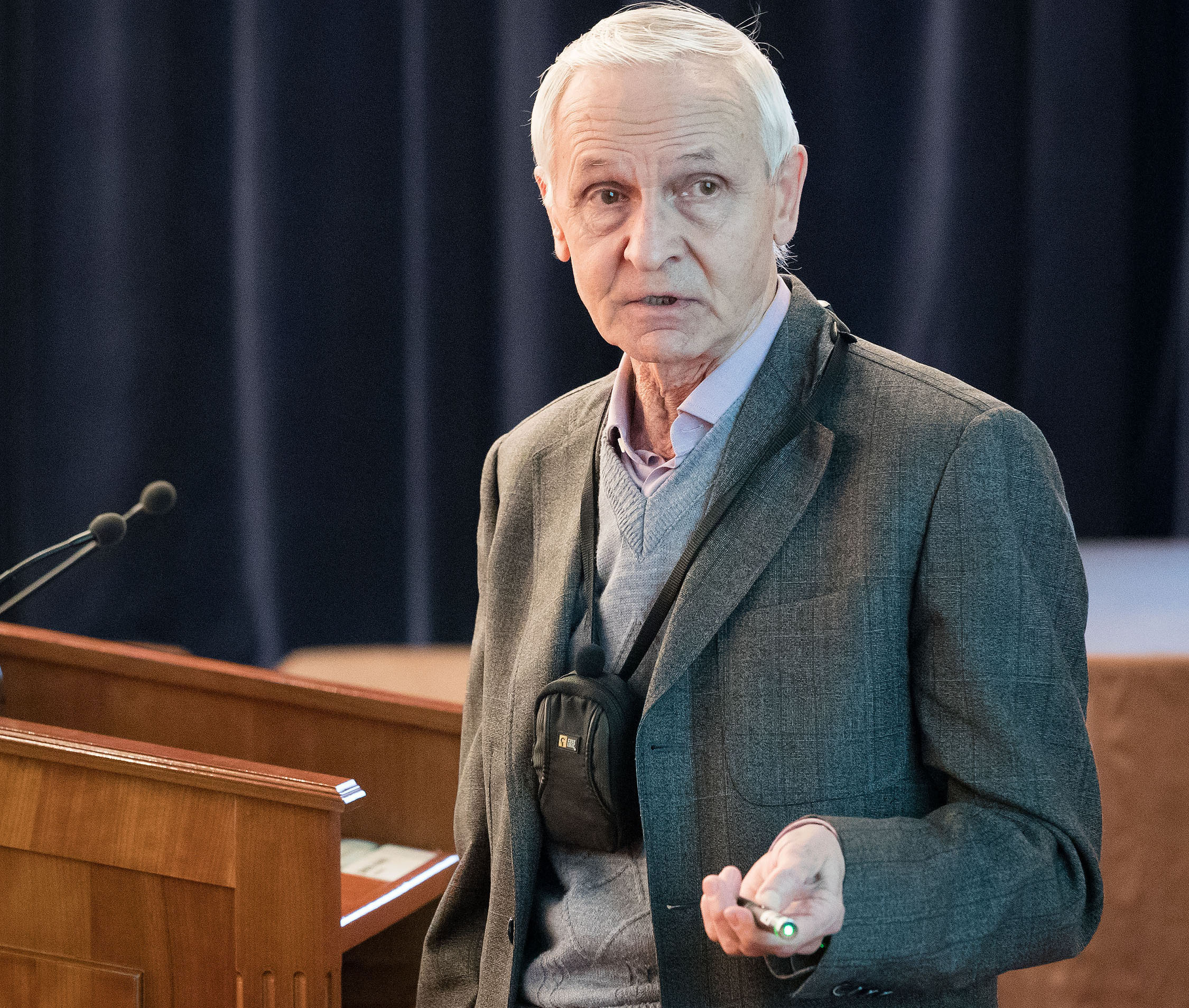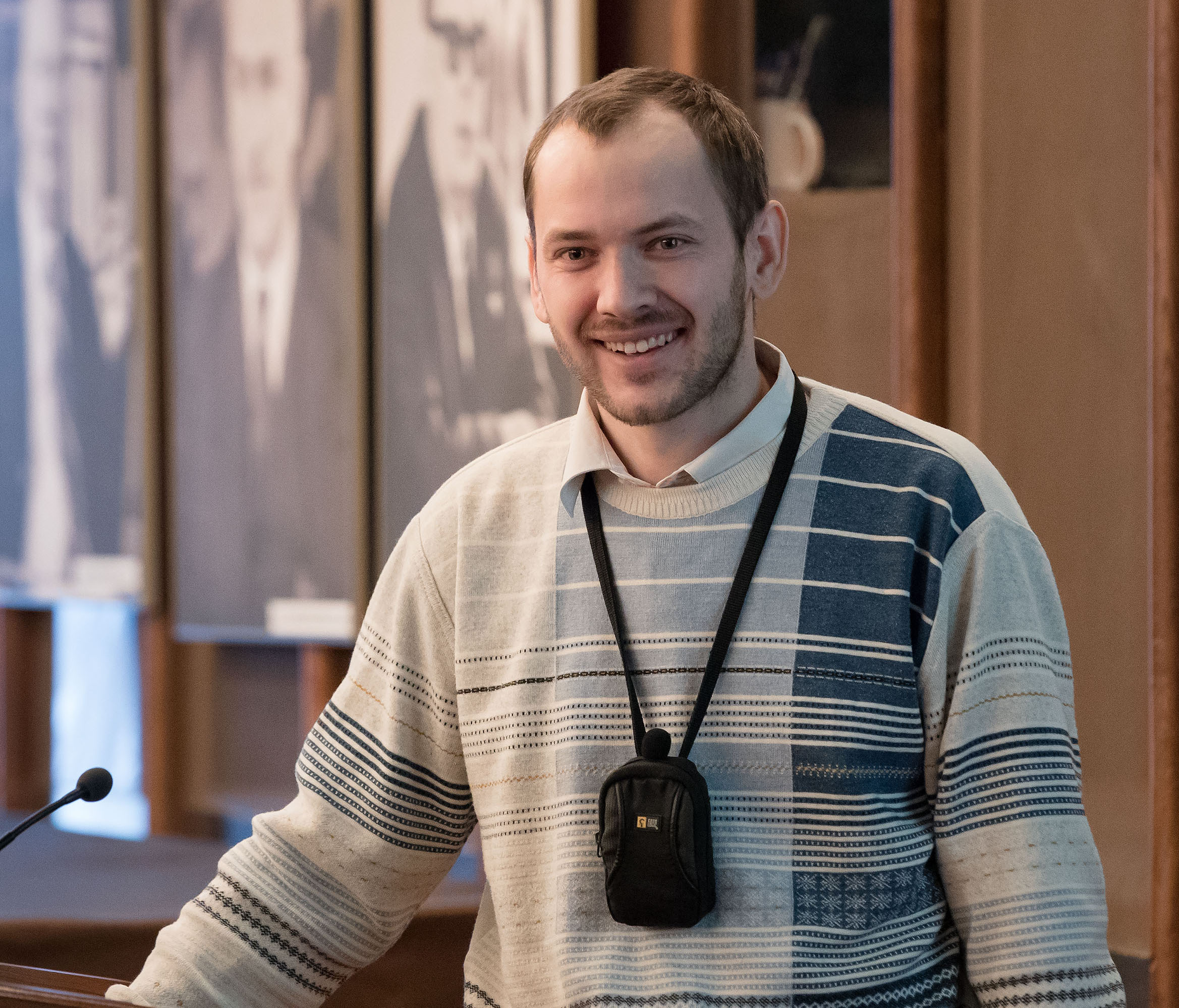NICA: sufficient work speed is achieved, tasks will be completed
Organization, 06 February 2018
From 31 January to 1 February 2018, a regular meeting of the JINR Programme Advisory Committee for Particle Physics was held in the International Conference Hall.
The meeting was opened by Chairman of the Committee I. Tserruya who reported on the implementation of the recommendations of the previous PAC meeting. Professor R. Lednický delivered information on the Resolution of the 122nd session of the JINR Scientific Council that had been held in September 2017 and on the decisions of the JINR Committee of Plenipotentiaries held in November 2017.
VBLHEP Director V. Kekelidze commented on the achievements of the JINR flagship project most of the reports were dedicated to: “Implementation of the NICA project is under way. Work speed is constantly getting faster as far as construction of our complex in its basic configuration should be completed until the end of 2020 according to the agreement between JINR and the Russian Federation. We have just little time for construction of such a huge complex. That is why we work in all sectors in line and try to enhance work organization… We estimate that we have completed 37% out of the total scope of work. It means that we need to fulfill other 63% of work just in three years. The sufficient work speed is achieved, so we hope that we will solve this challenge.”
A.Sidorin reported on progress towards realization of the Nuclotron-NICA project. PAC members noted progress in development of the accelerator complex and congratulated VBLHEP staff members on successful preparation of the heavy-ions source KRION-6T for the 55th run. Bringing into service of new equipment and modernization of existing elements of the accelerator complex, including the LU-20 modernization and a subsequent increase of beam intensity, were highly appreciated at the meeting.
“We promise to assemble and hold a run at the booster of the NICA until the end of the year,” A. Sidorin informed the journalists. “It is the first large accelerator of the complex. The plan for this year also comprises the run with heavy ions source at the Nuclotron complex. This will ensure the launch of the physics programme at the BM@N detector. We will check and may be even acquire the results at all the equipment. Unfortunately, the last year run was limited because of the emergency stop of the helium facility. Now, all the problems have been resolved, and we prepare the run and hope to obtain interesting results.”
N.Agapov reported on the infrastructure developments, including the Nuclotron. PAC experts highlighted progress in development of the key infrastructure elements including modernization of the power system of the beam channels, launch of the new control system of the Nuclotron, modernization of the cryogenic complex, production of magnets as well as construction of the collider complex.
VBLHEP Deputy Director H. Khodzhibagiyan informed about the emergency stop of the 55th run of Nuclotron and shared the plans for 2018. The meeting participants affirmed that the laboratory staff made everything possible to restore operation of the cryogenic system. Thus, information about the preventive actions against the same breakdowns in the future was highly appreciated.
After the report “Progress towards realization of the MPD project, including results of Monte-Carlo simulation” delivered by V.Kolesnikov, the PAC members noted progress of construction of the MPD magnet. However, PAC experts expressed their deep concern about the delay of its delivery to JINR. The report “Progress towards realization of the BM@N project” was delivered by M.Kapishin. In frames of this report, PAC members highlighted bringing into operation of new equipment and the first use of track GEM detectors of a large area. Nevertheless, insufficient number of specialists for an in-depth analysis of data acquired during the previous runs causes concern. The committee is waiting for the report on detector’s operation with a new heavy ions source.
Progress towards realization of the SPD project VBLHEP Deputy Director R.Tsenov reported on was underlined. PAC members approved the proposal to present the SPD technical design report at the PAC meeting in January 2019. The plan is supposed to be developed with support of a theoretical study group.
The report “NICA grant program and formation of the MPD and BM@N Collaborations” on the recent initiatives to attract new researchers not included in the JINR staff to the MPD and BM@N experiments was met with general approval. PAC members support the proposal to hold a meeting at JINR for official establishing of the MPD and BM@N international collaborations as well as the initiative to launch a programme of grants to attract and support research conducted at the NICA facility.
“Collaboration is a natural form of large scientific communities existence and a way of implementing such challenging tasks as those we are going to implement at the NICA facility,” V. Kekelidze commented on the keynotes of his report for journalists. “We have two large-scale experiments that are almost launched – BM@N at ejected Nuclotron beams and the multipurpose detector (MPD) at collider beams. One detector on spin physics – SPD – is under development. The collaboration already exists de facto as far as dozens of institutes from different countries participate in this research. However, we have not documented it de jure yet in the appropriate form. It is a self-sufficient structure that has its own management system, elected positions, responsibilities – all this was decided as in old days at JINR. We are now adopting the CERN system, and first two collaborations will be facilitated in the course of the meeting that will be held on 11 – 13 April 2018 in Dubna. Scientists from Chilean, Mexican, German and Russian institutes will come to JINR. We are compiling documents according to the rules affirmed by JINR and hope that after formalization of this process, work will advance more actively and the scope of work will widen thanks to engaging new members of these collaborations from numerous countries all over the world.”
Reports on and proposals for prolongation of projects that conclude in 2018 were supported by PAC members. In the frames of the report “Upgrade of the ATLAS detector at LHC” by A. Cheplakov, bringing into operation of production area of the Micromegas camera at DLNP JINR as well as development of the second production area to produce smaller muon cameras for domestic projects were highly appreciated. It was recommended to prolong JINR’s participation in the project of ATLAS modernization until the end of 2020. After the report by A. Zarubin on JINR participation in the “Upgrade of the CMS detector” programme and evaluation of the JINR’s contribution to the first stage of the CMS upgrade and scientific and technological developments for HL-LHC, it was recommended to continue participation in the project until the end of 2020. PAC noted a wide range of results obtained from the Borexino experiment. The report on participation in the Borexino/SOX/DarkSide experiments was delivered by D. Naumov. However, an opinion was expressed that these three experiments have diverse challenges. That is why it was recommended to present a global strategy assuring evaluation of all aspects of the project concerning science, group membership and its contribution to the project, investments and deadlines.
Reports on the scientific results obtained by the JINR groups in the LHC experiments were presented (ALICE results were presented by B. Batyunya, ATLAS by I. Yeletskikh, CMS by M. Savina). PAC members expressed gratitude to I. Anikin for his scientific report “Factorization theorem and duality: from low-energy to high-energy regimes”.
30 posters on particle physics by young scientists from DLNP, LIT and VBLHEP were presented. The committee decided to present the report by A. Vishneva “Limit for effective moment of magnet of solar neutrino basing on the Borexino data” at the meeting of the JINR Scientific Council in February 2018. Thus, the recommendation to make posters on actual work of young scientists was affirmed.
The next meeting of PAC for Particle Physics will be held on 18 – 19 June 2018.
Galina Myalkovskaya, JINR Weekly Newspaper;
Photo by Igor Lapenko
